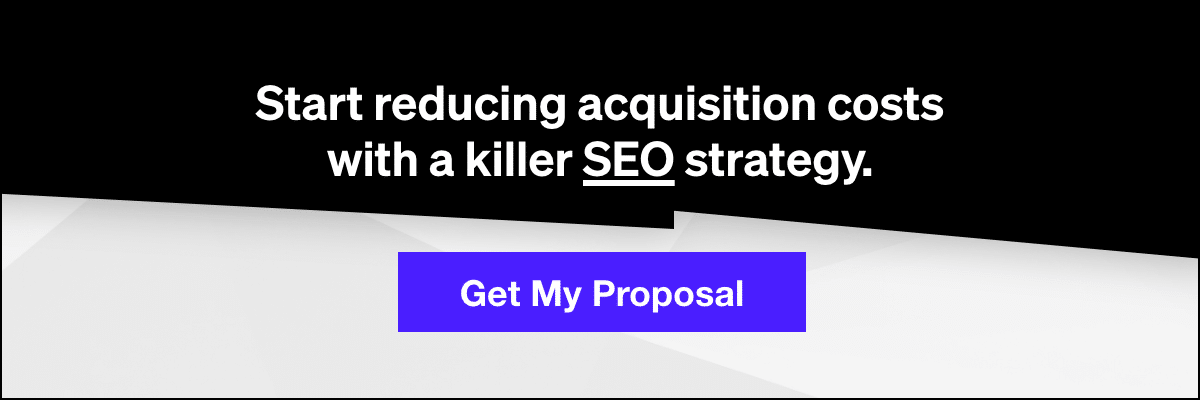Naming something—a process, product, and even a web page—is a powerful tool in your marketing kit. It gives your page an identity, which makes it easily recognizable to both customers and employees. This is why it is so important to make sure every page on your website has a clear and compelling title tag. This tag is what essentially names each and every page on your site.
Related: A Guide to the Most Effective SEO Techniques
So, naturally, attention-grabbing title tags are what can help your site stand out from the crowd. But, before we get into the mechanics on how to write a stellar title tag, let’s break down exactly what a title tag is and why it’s important:
Each page has an HTML element that allows you to specify the title of the page—this element is a title tag. These tags are what pop up in search engine results as a blue, clickable headline. Essentially, it’s a major factor in what drives traffic to your page from a search so it’s imperative your title tag copy gets clicked.
Not only that, but these tags also impact SEO. Google’s algorithms will take your page’s title tags into account when ranking your site.
Related: What is Metadata and How to Use it to Benefit Your Brand
Aside from SEO, title tags are also important in other areas—including web browser displays and on social media. On web browsers, your title tag is what is displayed at the very top of the tab, which makes the page easily identifiable for your audience. On social media, the title tag is what the platform will use to decide what to display when someone decides to share a link to that page.
Here’s How To Write A Compelling Title Tag
So now that we know the definition and importance of a title tag, there are a few tricks to ensuring you’re crafting one that will do its job—which is to give the page a clear identity and, ultimately, generate clicks.
To accomplish this, you’ll want to make sure your title tag is:
- Clear and to-the-point
Avoid things like passive voice or abstract descriptions. Clarity is what both search engines and your audience is looking for. Your audience wants to know what the web page is all about and how it will benefit them. Google also knows what your audience wants and its algorithms work to cater to these demands. You’ll need to appease both with clear and straightforward copy. - Short and sweet
The general recommended character count for a title tag is around 60 characters. This exact count can change depending on the browser, search engine, or social media platform, but anywhere in this range is ideal. At Power Digital, we do not recommend going over the recommended 60 character limit as this lessens the user experience and can decrease click through rate.
- Benefit driven
A bad habit many marketers often fall into is creating copy that is company-centric and focuses mainly on the features of the product or service. While there is a time and place for this type of copy, when it comes to your title tag your audience wants to know, upfront, what’s in it for them. Crafting benefit-driven copy is the best way to do this. Just put yourself in the customer’s shoes and ask, “Why should I click this link? How will it benefit me?”.
- Using power words
Power words convey authority—they snap up attention and draw the reader right in. Take a look at the words in your title tag and assess if they are the type of words that tug at emotions or demand attention. If not, you may need to spice things up a bit.
- Using keywords strategically
Google does crawl your entire site and index the content, but it assesses your title tag to determine what your site is all about. Make sure you’re using your target keywords for each in your title tags as it will help you both connect to your desired audience and increase your site’s ranking for those keywords.
Related: Are You Choosing the Right Keywords? A Guide to Search Intent
However, you want to avoid keyword stuffing tactics—only use your keywords when and where they make sense.
Wrapping Up
While weighing in at only 60 characters, the title tag may seem like an insignificant part of your content marketing strategy but this piece of content is a heavy hitter in terms of both SEO and conversions. Make sure you’re using the latest best practices when it comes to crafting title tag copy so you can ensure your page will rank higher in search engine results and get the clicks it deserves.


















